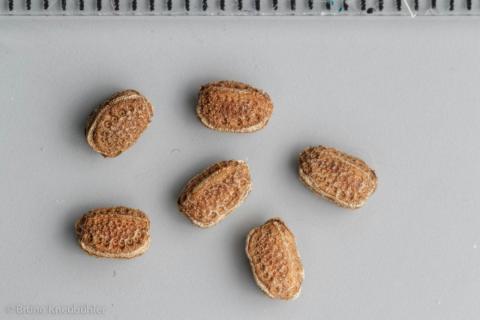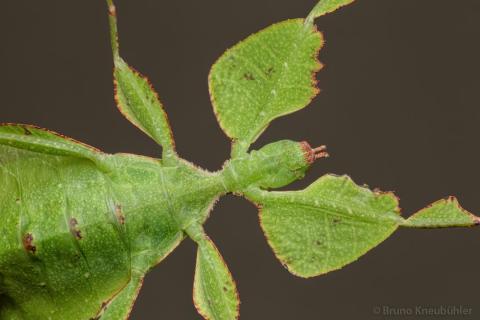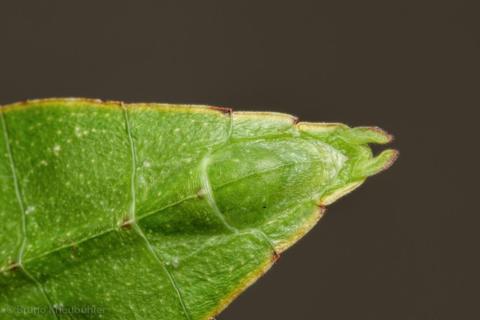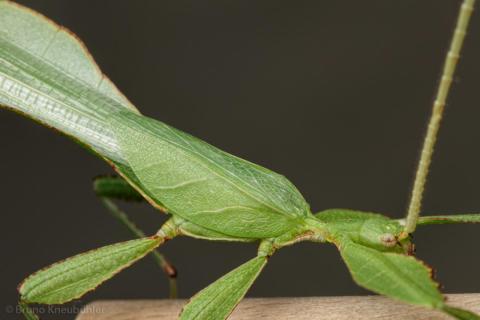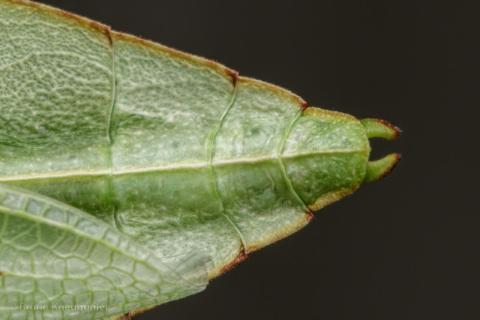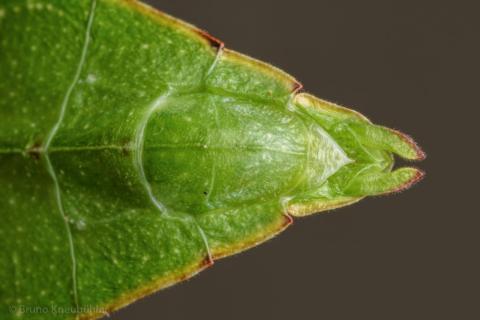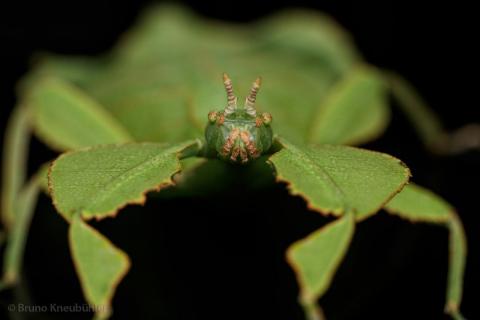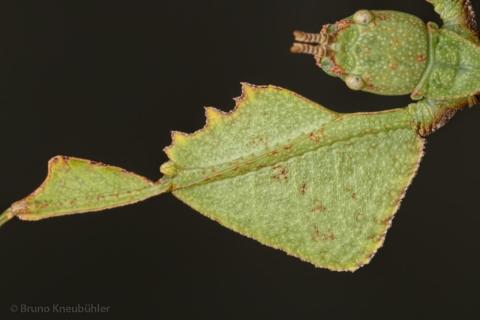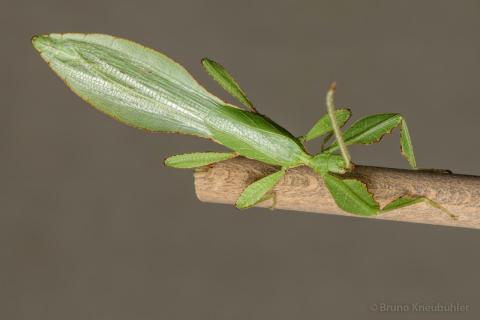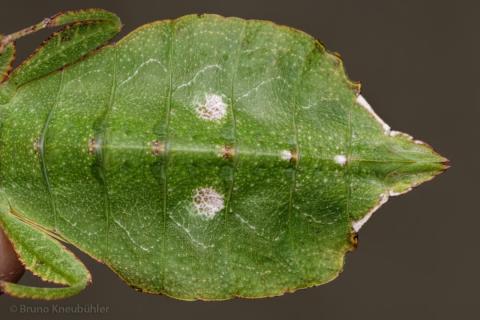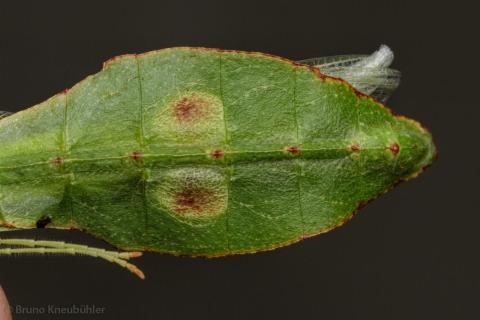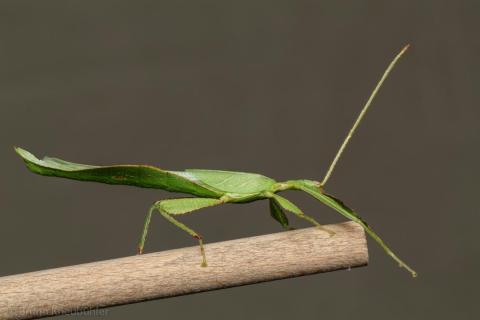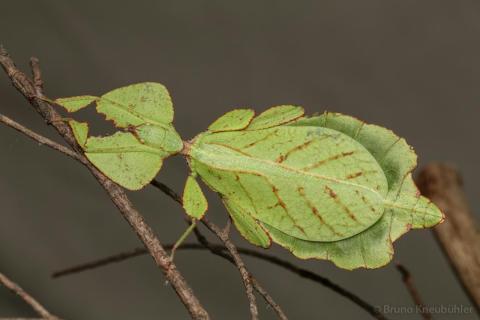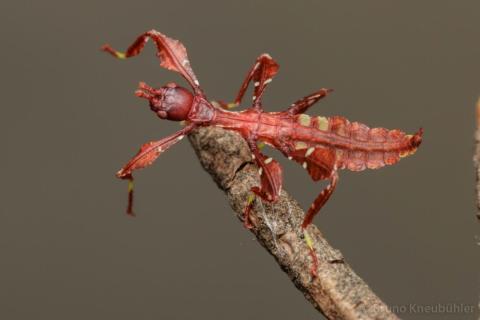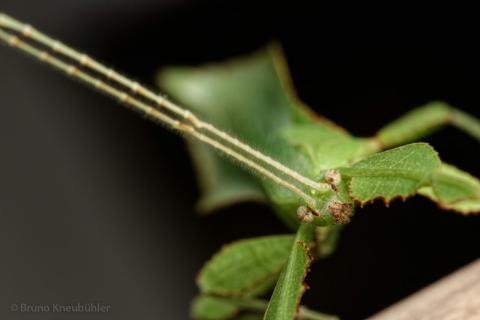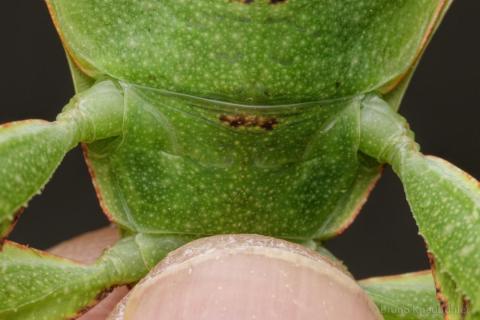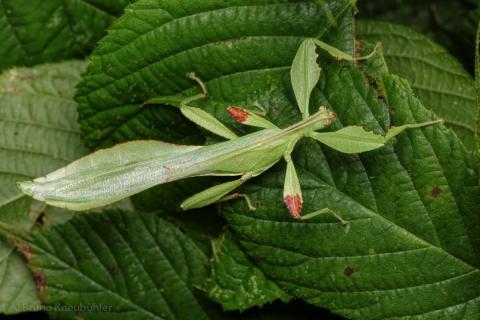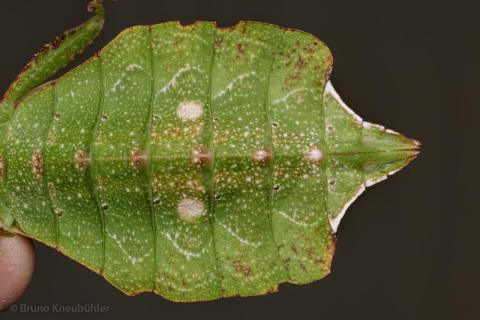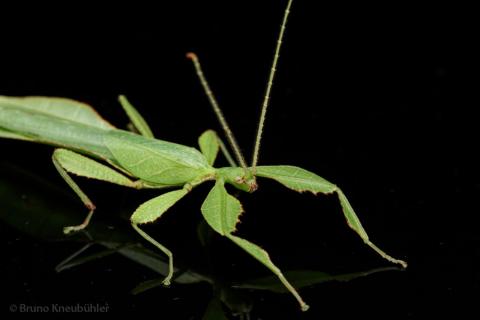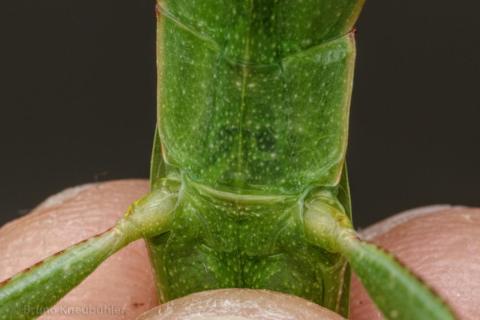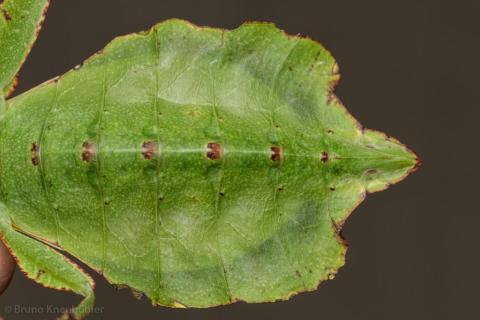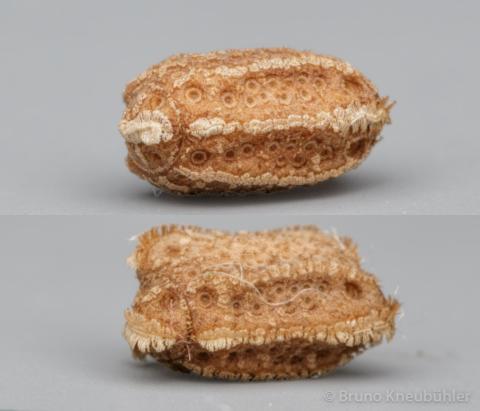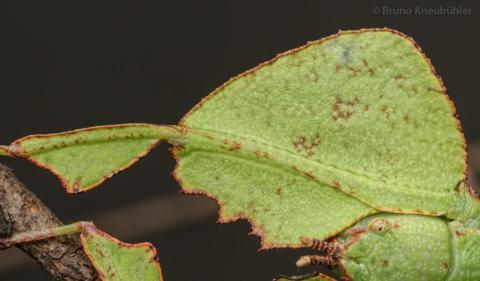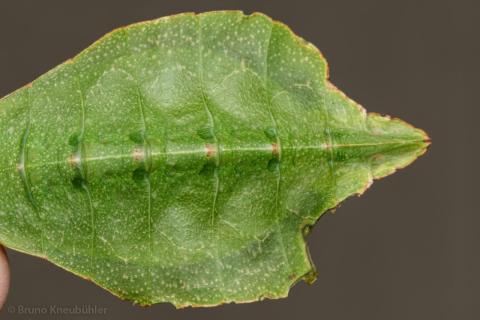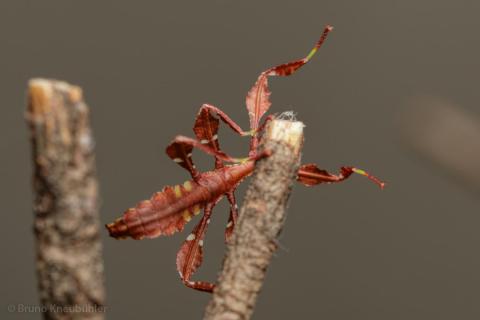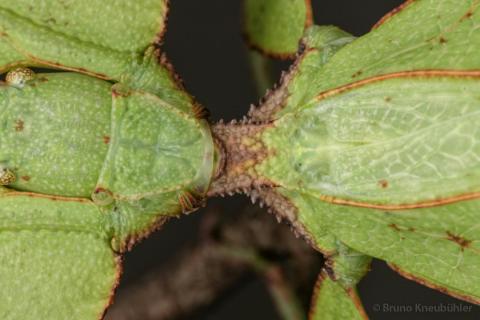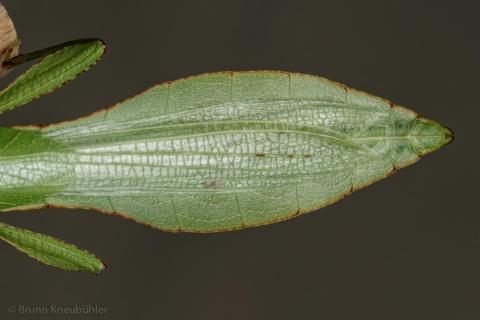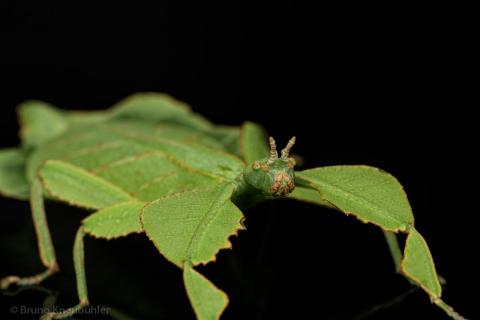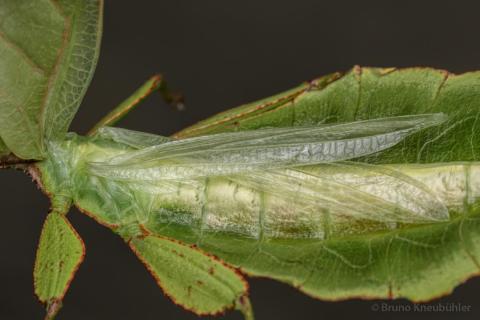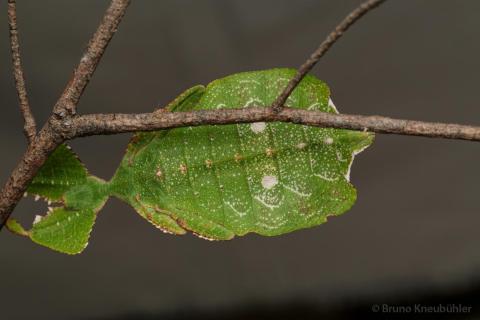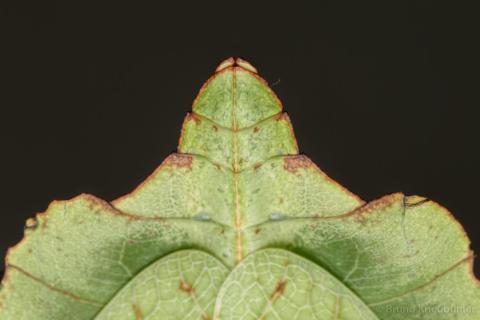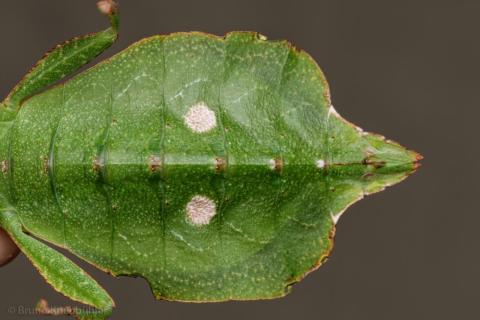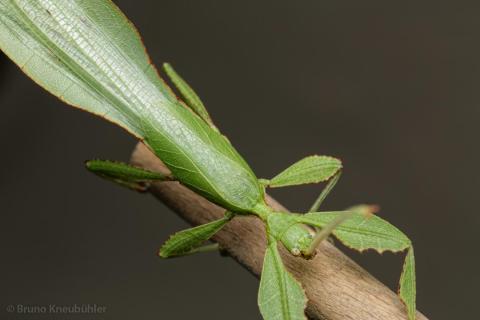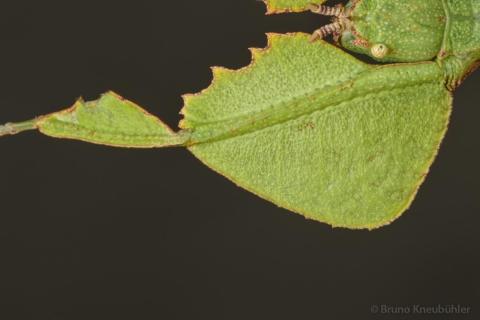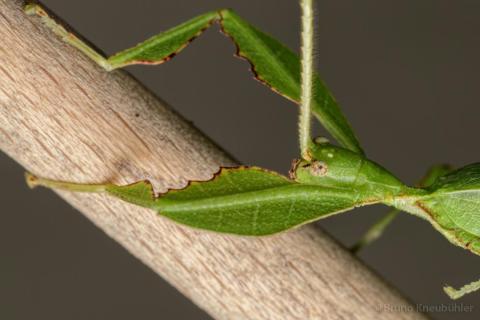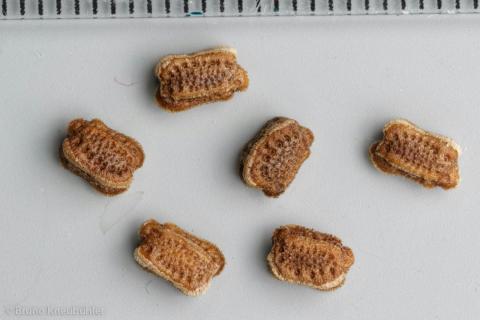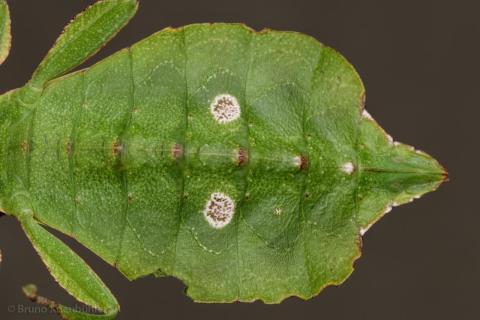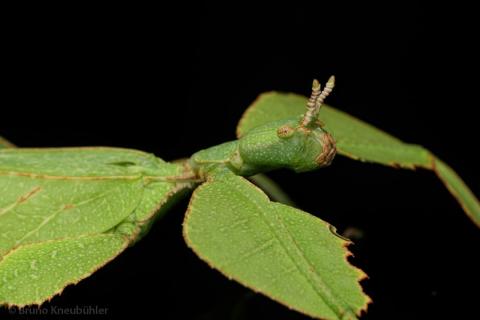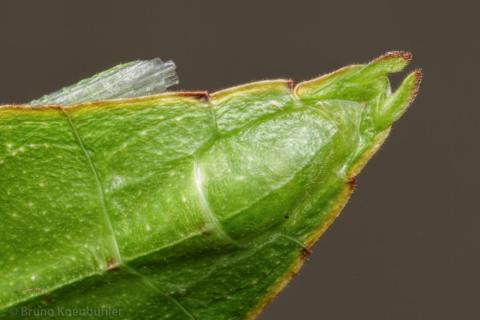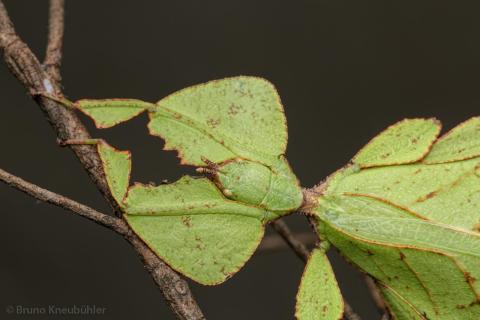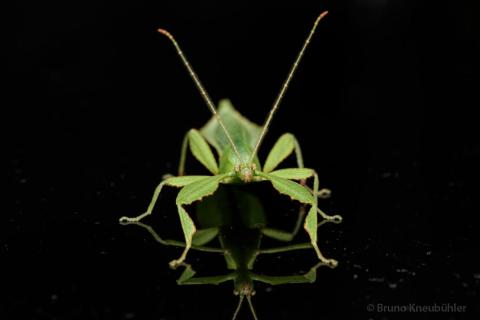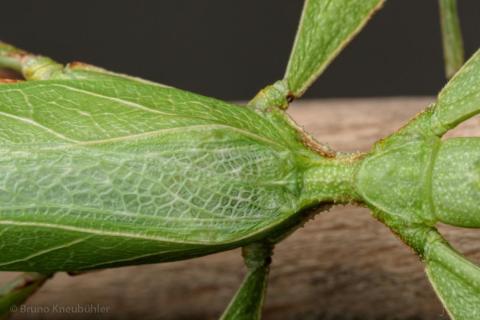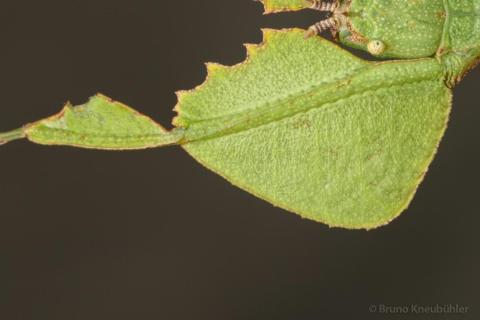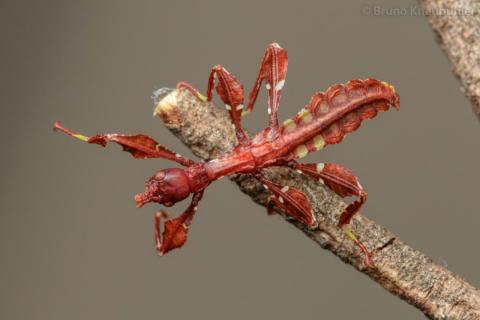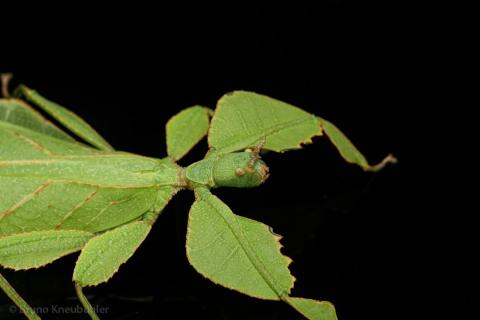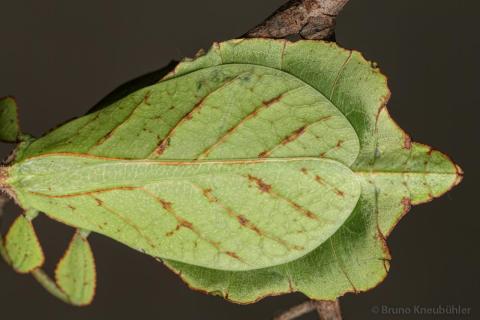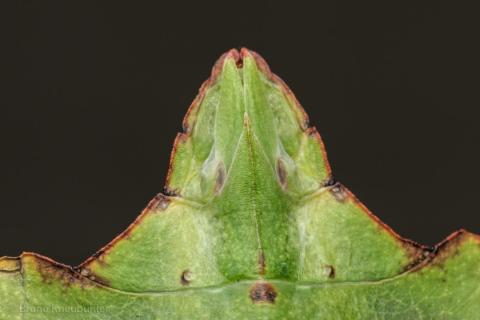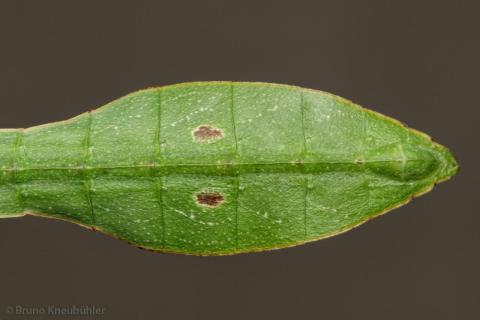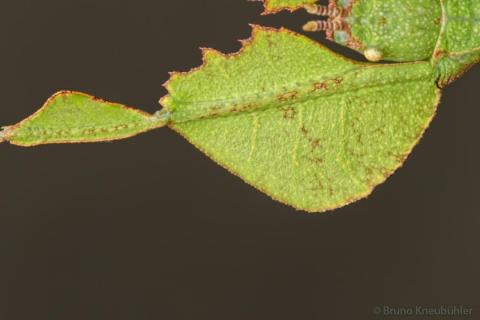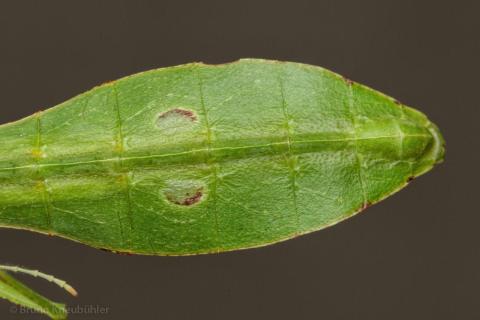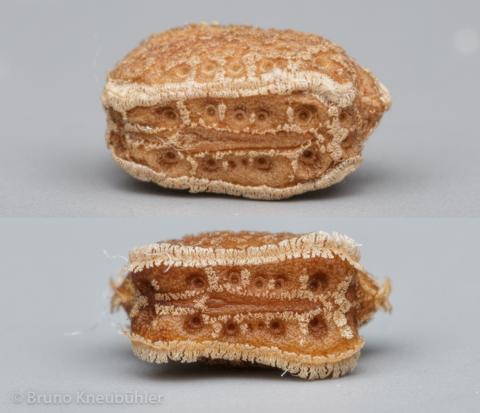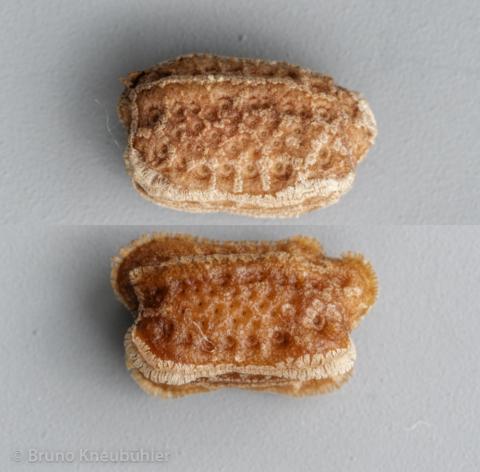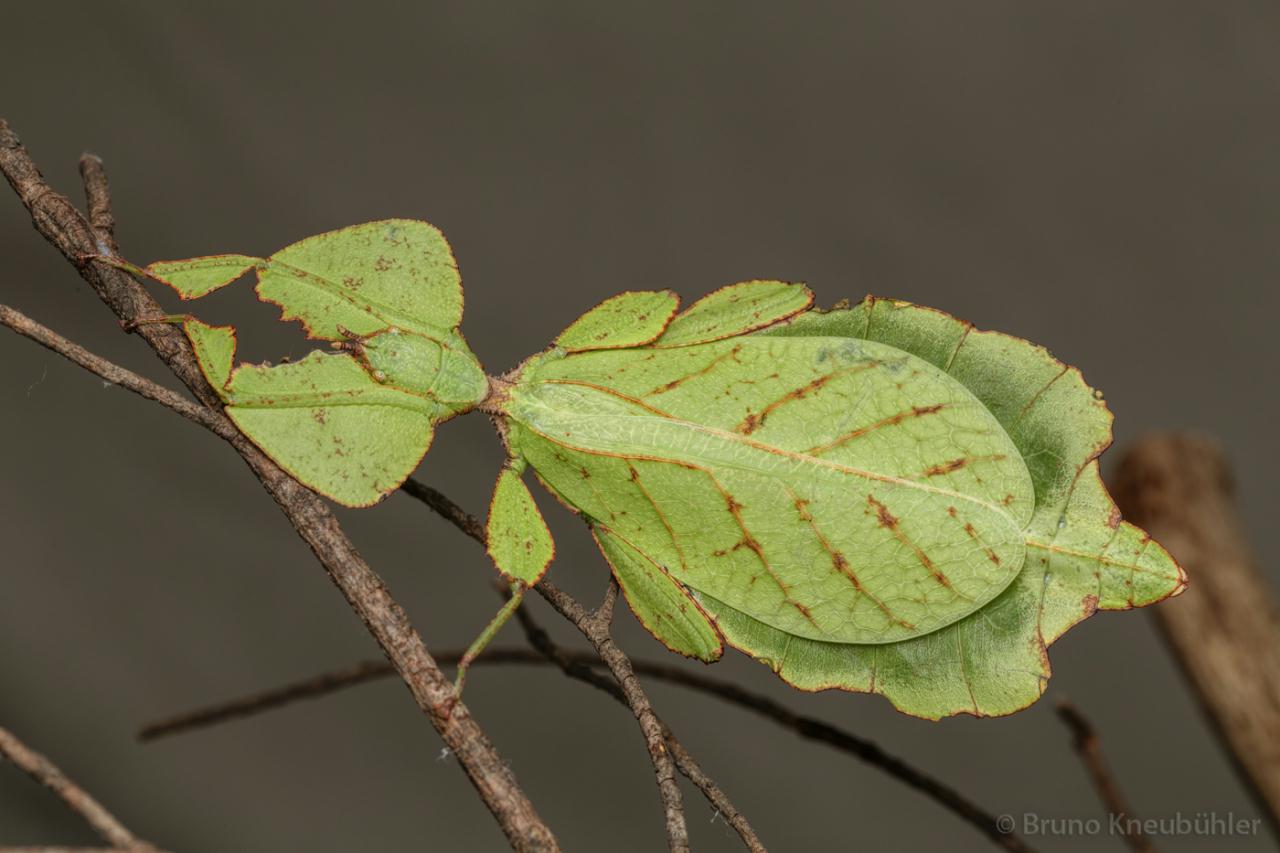
Genus
Species
Stock
CLP
764
PSG
128a
Culture status
In culture
Foodplants
Bramble (Rubus spp.)
Breeding notes
(by Bruno Kneubuehler)
General Informations
- provenience: Tha Pla Duk (near Doi Khun Tan NP, Tha Pla Duk subdistrict, Mae Tha district, Lamphun, Thailand)
- ID and taxonomic evaluation by Joachim Bresseel (BE)
- F1 CB culture in 2015 by Suttah Ek-Amnuay (TH)
- first CB culture in Europe by Bruno Kneubuehler (CH)
- further taxonomical informations ➤ Phasmida Species Files
- this is a pure culture, and serious breeders are requested to avoid mixing this culture with similar populations from a different provenience. When spreading this culture to other breeders, then always use the full name with provenience
- this culture has the number CLP (Online Phasma Culture List)
Females
- typical for the Ph. westwoodii species group
- body length ≈ 8.5 - 9 cm
- all females are green (so far)
- eye spots (ventrally) are very variable in size and color, some females even lack these spots
- long, thin hindwings
Males
- very typical for the Ph. westwoodii species group
- body length ≈ 6.5 -7 cm
- long antennae
- green
- eye spots (ventrally) are very variable in size and color, some males even lack these spots
Nymphs
- freshly hatched nymphs are reddish, with greenish-white spots
- about 12 mm
- on how to distinguish between male and female nymphs
Eggs
- ≈ 5 x 2.5 mm - frehly laid / before having been in contact with a humid / wet environment
- ≈ 6 x 3 mm - after being in contact with a humid / wet environment
- some structures and fringes on the egg expand /swell up when in contact with a humid / wet environment. This expansion is reversible so some degree, when the eggs is again exposed to a dry environment
- the function of this swelling-up is not (yet) known, but also wellknown from eggs of other Phyllium (Phyllium) species. A possibility could be that this allows to store some humidity, and offers thus a (short-term) protection against exsiccation
- orange-brown
Food Plants
- bramble (Rubus spp.)
well accepted by nymphs and adults - other possible food plants (not tested though):
Salal (Gaultheria shallon)
hazelnut (Corylus avellana)
raspberry (Rubus idaeus)
oak (Quercus spp.)
Breeding, Behaviour
- easy to breed
- young nymphs are active mainly during the day
- older nymphs and adults are mainly active during the night, although males are also often seen wandering about during the day
- males often drop to the ground when being touched, and they can tremble heavily
- a defensive spray has not (yet) been observed
- females fling the eggs away with a swift swing of their abdomen
- eggs just drop to the ground
- about 10 - 15 eggs per female and week
- incubation (Cup-Incubation-method, on medium damp vermiculite) about 3 - 4 months at 20 - 24 °C
- it is quite common that some nymphs will hatch weeks or even many months after the first nymphs - from the very same batch of eggs
- eggs can be covered with vermiculite (about 10 mm high), which makes it easier for the nymphs to hatch without getting stuck in the eggs shell
- eggs of this species are not prone to get mouldy
- nymphs hatch during daytime (around noon), which is normal for all Phyllium species
- a humidity of about 65 - 75 % rH seems to be good enough for nymphs and adult females
- but adult males do better if kept at a higher humidity (75 - 85 % rH)
- one can spray them regularly with chlorine-free water, but allow the water to dry up before spraying again
- it is best to keep young nymphs in an airy netting cage, a ventilator which provides regular air movement is very much recommended
- it is very common, that especially older female nymphs or adult females have their abdomen partially eaten by other individuals (especially by males). Therefore this species shall be kept in a big cage with a low population density
- provide a cage of about 30 x 30 x 40 (cm, L x B x H) for 2 adult couples
- males will be adult after 9 - 11 months (at 20 - 24°C), females after 10 - 13 months
- the Free-Standing-Setup is very much recommened to get freshly hatched nymphs starting to feed. Once the nymphs are in L3, the Free-Standing-Setup is no more necessary
